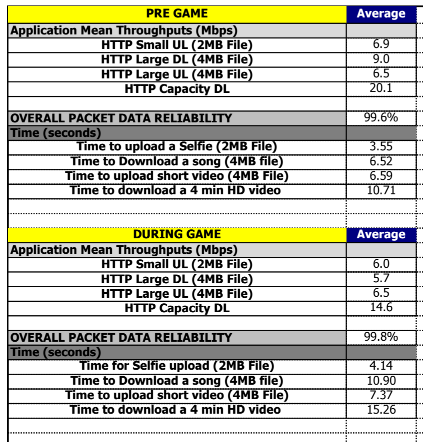Let’s take a moment to appreciate how great LTE is

Like a lot of you, I regularly find ample things to complain about with regards to my wireless carrier — yes, Verizon, your coverage is fantastic but I absolutely despise your data caps. That said, there are times when you do have to step back and marvel at the technological progress that the wireless industry has made in developing powerful, durable LTE data networks that can stand up under a lot of strain.
DON’T MISS: See Pluto up close in the highest quality NASA pics yet
I got a demonstration of this first hand recently when I spent an afternoon with the team at Global Wireless Solutions testing out all four wireless carriers’ performances during a Red Sox game at Fenway Park in Boston. Even though there were more than 35,000 people in a fairly compact area sending text messages, posting selfies and sending out tweets, all four carriers’ networks delivered quality performance throughout the game.
Obviously data performance on the networks isn’t as strong during the game with a packed stadium as it was before the game with a relatively sparse crowd. Before the game across all four wireless networks, it took an estimated 3.55 seconds to upload a selfie, 6.52 seconds to download a song, and 10.71 seconds to download a four-minute HD video. During the game, it took 4.14 seconds to upload a selfie, 10.9 seconds to download a song and 15.26 seconds to download a four-minute HD video.

What’s even more impressive here is that data packet reliability actually improved from 99.6% before the game to 99.8% during the game. This means that when you upload or download something during a game, virtually all the data is making it through the pipe, despite the fact that thousands of other people are uploading and downloading at the same time. AT&T and T-Mobile were particularly reliable in this setting as they had no failed tasks during the game.
We’ve come a long when from the days when the Red Sox won the 2004 World Series and it was almost impossible for me to make a phone call or send a text message to friends to celebrate in the aftermath of the game — all the cell sites were simply overloaded with activity. Thanks to high-speed data networks, however, I no longer have to worry about being able to make a call or send a text — I can just use WhatsApp or other messaging services and be confident my wireless network will have enough capacity to handle it.
But we don’t even have to go back as far as 2004 to see the huge upgrades that have been made in wireless data services. We can also remember that when the iPhone first came out, AT&T’s 3G network had real difficulty handling all the data being used by customers. After years of investment and deployment, carriers’ 4G networks are able to hold up well under stress even though everyone these days has a smartphone.
This isn’t meant to be a love letter carriers, mind you, but more a tip of the cap to technological progress and the vast improvements that have been made in the span of just a few years.
And with that, it’s time to go back to complaining about Verizon’s stupid data caps…
Related stories
One woman is so scared of wireless tech that she spent $6,400 to block Wi-Fi and LTE from her house
How one device can fix your most pressing smartphone issues
Intel's first 4G LTE modem is heading to smartphones and tablets
More from BGR: A Trillion Dollars Got the Army an F-35 That’s Worse Than the F-16 It Replaces
This article was originally published on BGR.com

